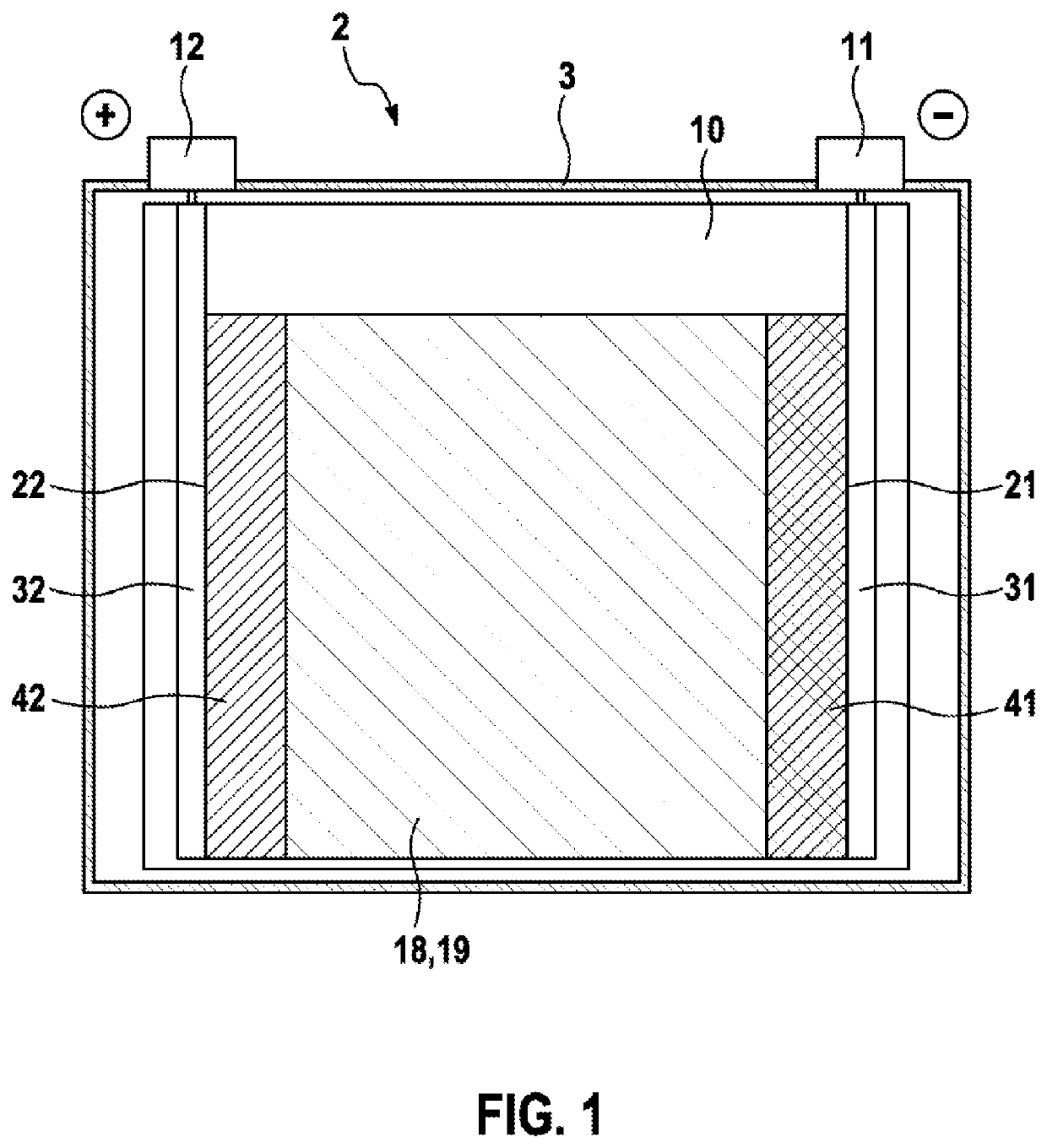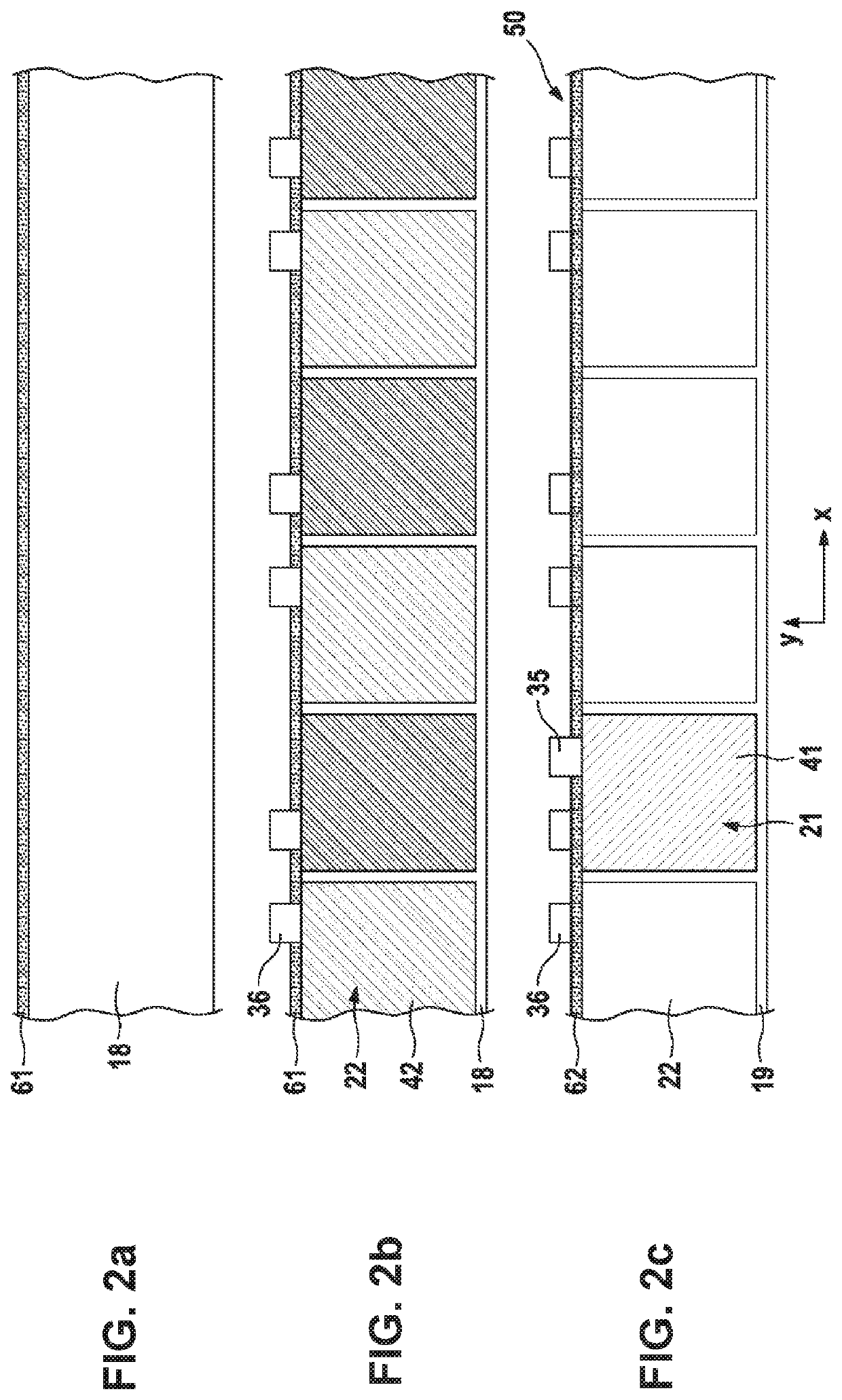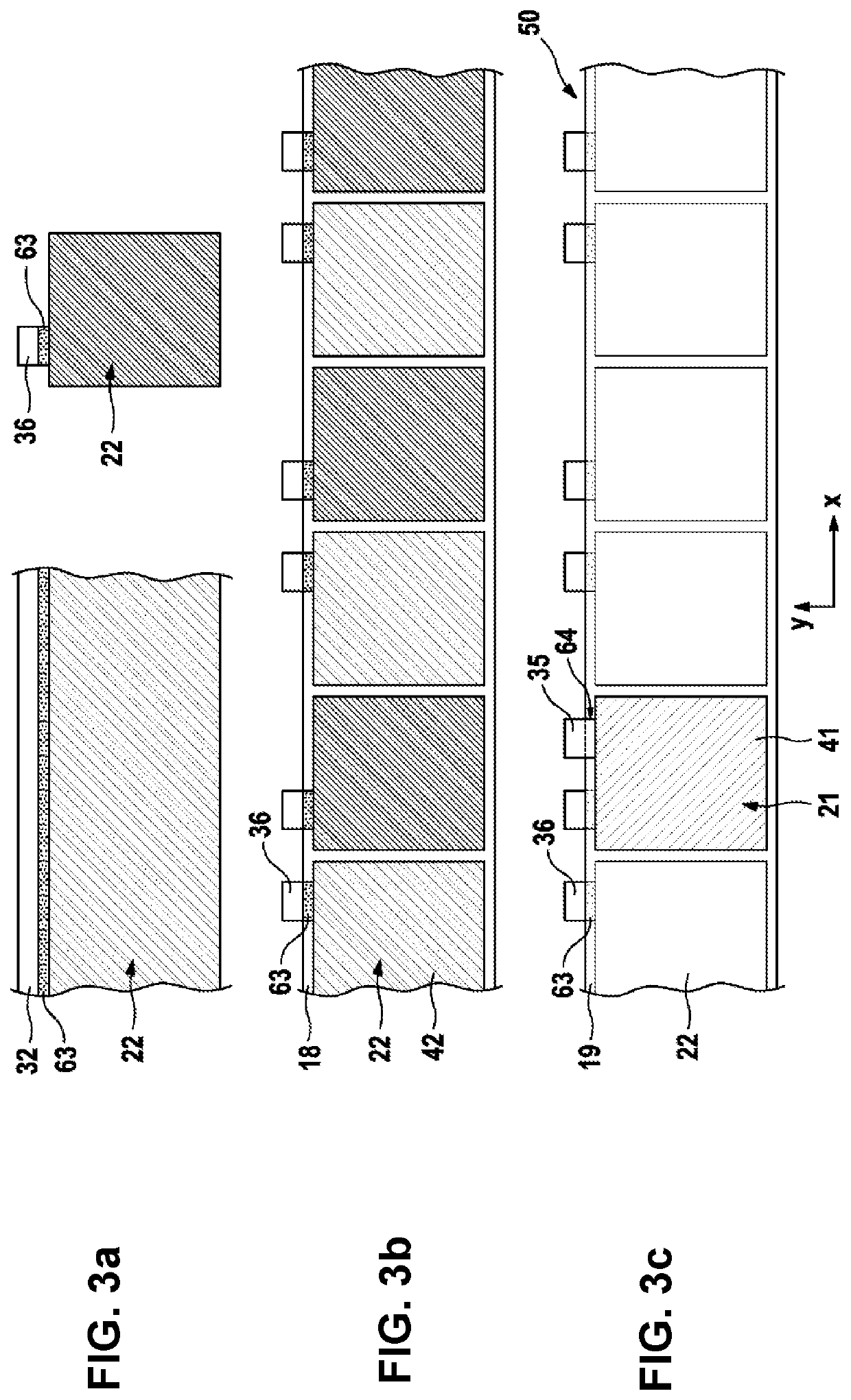Method for producing an electrode unit for a battery cell and electrode unit
a battery cell and electrode unit technology, applied in the direction of cell components, final product manufacturing, sustainable manufacturing/processing, etc., can solve the problems of delamination, heterogeneity in the curve region, displacement, etc., and achieve the effect of low manufacturing tolerance, high process speed, and improved performance and aging behavior of the electrode uni
- Summary
- Abstract
- Description
- Claims
- Application Information
AI Technical Summary
Benefits of technology
Problems solved by technology
Method used
Image
Examples
Embodiment Construction
[0046]In the following description of the embodiments of the invention, identical or similar elements are denoted by the same reference signs, whereby repeated description of these elements is omitted in individual cases. The figures represent the subject matter of the invention merely schematically.
[0047]FIG. 1 shows a schematic illustration of the battery cell 2. The battery cell 2 comprises a housing 3, which is prismatic, in the present case cuboidal, in form. In the present case, the housing 3 is designed to be electrically conductive and is manufactured from aluminum, for example.
[0048]The battery cell 2 comprises a negative terminal 11 and a positive terminal 12. A voltage provided by the battery cell 2 can be picked off via the terminals 11, 12. Furthermore, the battery cell 2 can also be charged via the terminals 11, 12.
[0049]An electrode unit 10, which is constructed as an electrode stack in the present case, is arranged within the housing 3 of the battery cell 2. The elec...
PUM
| Property | Measurement | Unit |
|---|---|---|
| width | aaaaa | aaaaa |
| diameter | aaaaa | aaaaa |
| diameter | aaaaa | aaaaa |
Abstract
Description
Claims
Application Information
 Login to View More
Login to View More - R&D
- Intellectual Property
- Life Sciences
- Materials
- Tech Scout
- Unparalleled Data Quality
- Higher Quality Content
- 60% Fewer Hallucinations
Browse by: Latest US Patents, China's latest patents, Technical Efficacy Thesaurus, Application Domain, Technology Topic, Popular Technical Reports.
© 2025 PatSnap. All rights reserved.Legal|Privacy policy|Modern Slavery Act Transparency Statement|Sitemap|About US| Contact US: help@patsnap.com



